Last Chance to Catch NYC's Holiday Notalgia Train
We met the voices of the NYC subway on our nostalgia ride this weekend!


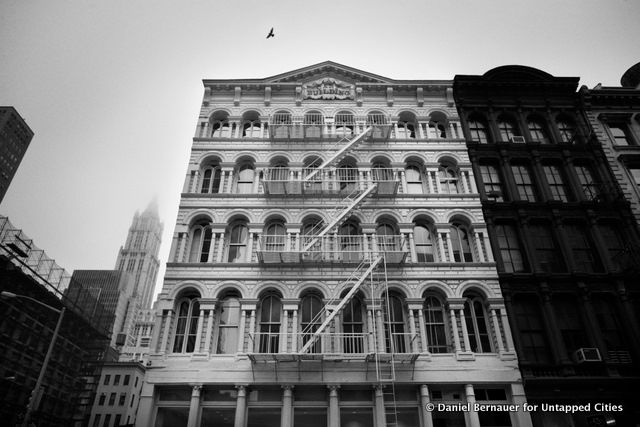
Did you know that the Underground Railroad once ran through New York City? The New York City stops were, in fact, a major segment on the journey to freedom. Many settled in the area formerly known as Five Points, where African Americans, freed slaves and fugitive slaves co-mingled with immigrants from Ireland and Germany. The Five Points area, bordered by present day Bowery Street, Canal Street, Centre Street and Park Row, was a notorious slum riddled with crime, disease, overcrowded tenements and unsanitary living conditions.
Within and around this tumultuous enclave lived a clandestine community of progressive citizens who helped fugitive slaves escape, and whose network of Underground Railroad locations stretchess across the city. While some of these buildings still exist, most of them have disappeared. Some were burned down, some torn down. Untapped has been on a pilgrimage over the past year to visit and document this lesser known piece of New York history. The beautiful images of Untapped Cities photographer Daniel Bernauer capture the juxtaposition between past and present in all of these locations.
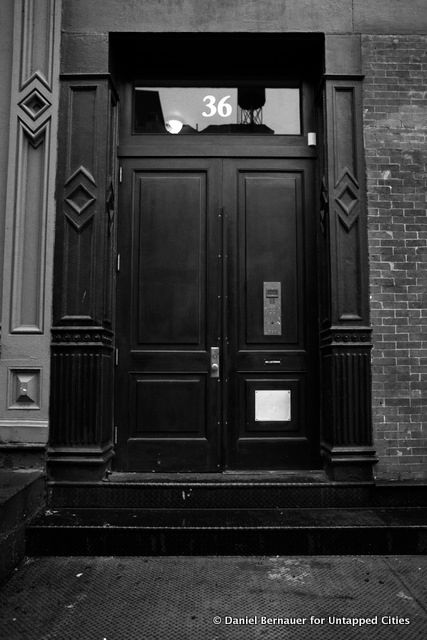
David Ruggles was born a free man in Connecticut around 1810 and arrived in New York at the age of 17. He quickly became an activist for African American rights and the abolitionist movement. Ruggles’s home on 36 Lispenard Street was a veritable hub for both the Underground Railroad and African American activist/intellectual culture.
As part of the Underground Railroad, Ruggles hosted an estimated 600 escaped slaves in transit, including famed abolitionist Frederick Douglass. He also operated a bookstore and library out of his home, providing many anti-slavery pamphlets, newspapers and other reading material. He purchased a printing press, which he used to publish his own pamphlets and a magazine that he edited–the Mirror of Liberty, the first African American magazine. Sadly, Ruggles died penniless and blind at age 39, laden with financial troubles.
The original townhouse was demolished and 36 Lispenard is now La Colombe Torrefaction coffee shop. The barista told us that the basement was original, but we couldn’t get a peek, unfortunately.
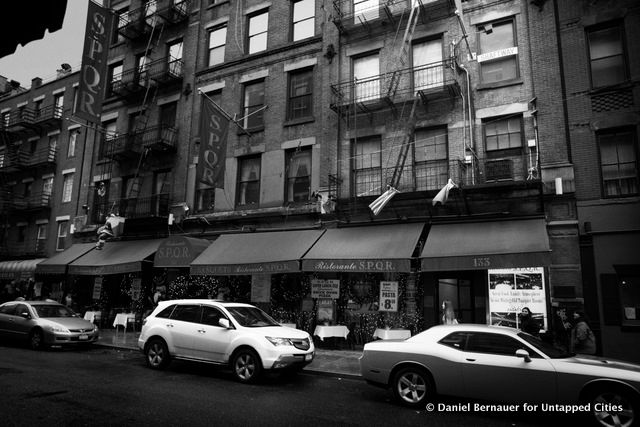
The African Free School system was founded in 1785 as a segment of the New York Manumission Society, an organization that supported the abolition of slavery in the United States. It was eventually taken over by African Americans, and by 1834, the schools were absorbed into the New York public school system. Around 1,400 students were enrolled in seven different school buildings (slavery was abolished in New York in 1827). Many prominent members of the African-American community went to the school, including James McCune Smith, the first licenced African-American doctor and active abolitionist; Patrick Reason, a famous engraver; and Henry Highland Garnet, an abolitionist, orator and distinguished Presbyterian minister.
Today, 135-137 Mulberry Street no longer exist as they’ve been incorporated into 133. On the first foor is the Italian restaurant S.P.Q.R. According to the New York City Department of Buildings, 133 Mulberry was used for light manufacturing and office space as late as 1973. But by 1980 or 1981, when the buildings were merged, the first floor became a restaurant and the upper floors apartments.
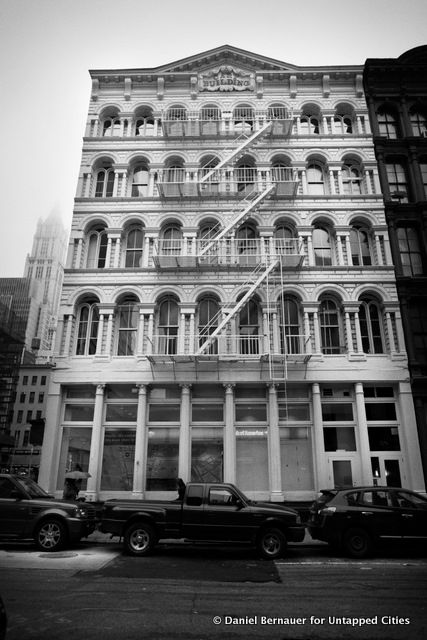
The Mother African Methodist Episcopal Church was the first black church in New York state, founded in 1796. The church, known as the freedom church, became a stop along the Underground Railroad. The church was also a focal point of contemporary black social activism, attended Frederick Douglass, Harriet Tubman and Sojourner Truth. The church relocated to Harlem in 1925 to its present-day location at 140-7 W. 137th Street.
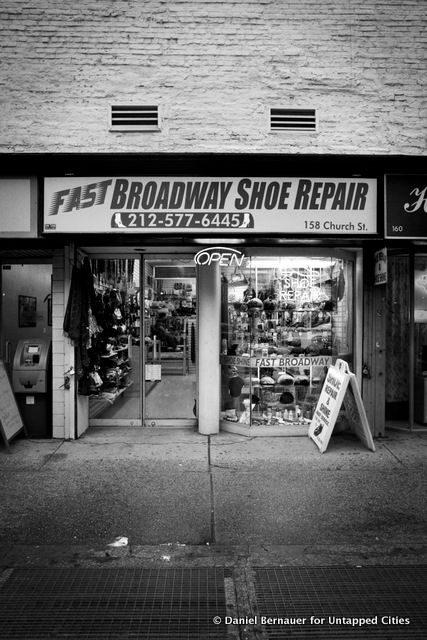
(NOTE: There is a discrepancy in the address–158 Church Street is a couple blocks away from the Leonard Street intersection. Leonard Street, however, is where the plaque is located.)
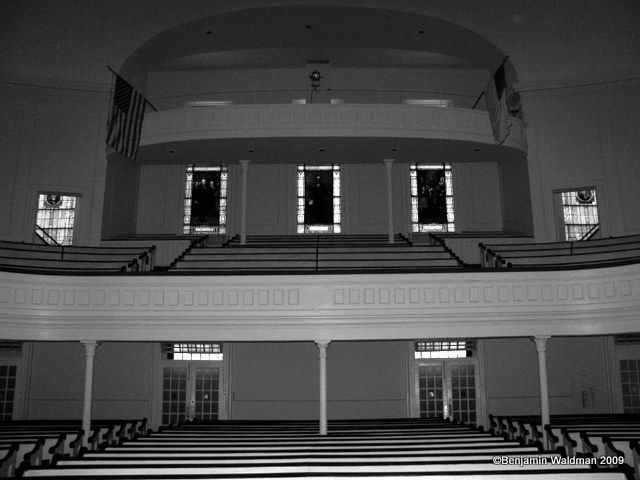
Plymouth Church was founded in 1847. Its first pastor was the eminent Henry Ward Beecher, brother of Harriet Beecher Stowe (author of Uncle Tom’s Cabin). Beecher was a captivating orator and tireless abolitionist. Plymouth Church was known as Brooklyn’s “Grand Central Depot” of the Underground Railroad for its prominent activity in helping slaves escape and gain their freedom. Beecher would hold mock auctions at the church during sermons, where he would urge people to bid for the freedom of escaped slaves while simultaneously exhibiting the horrifying aspects of enslavement.
Sojourner Truth, Frederick Douglass and William Lloyd Garrison all spoke in Plymouth Church. Abraham Lincoln visited and worshipped in the church in February of 1860. He was, at the time, an unannounced presidential candidate. Lincoln was actually scheduled to speak at Plymouth Church during that same visit, but the venue was relocated at the last minute to Astor House in Manhattan–where he gave a speech that exhibited his anti-slavery sentiment and helped him to win the Republican presidential nomination. The pew Lincoln sat in is now marked with a silver plaque, and Plymouth Church remains the only church in New York City that he attended.
The original building burned down in 1849, which enabled the congregation to build a grander sanctuary seating 2,800. This building still exists and is in use by the same church today. It is now a national historic landmark which contains a piece of Plymouth Rock, one of two in the city.
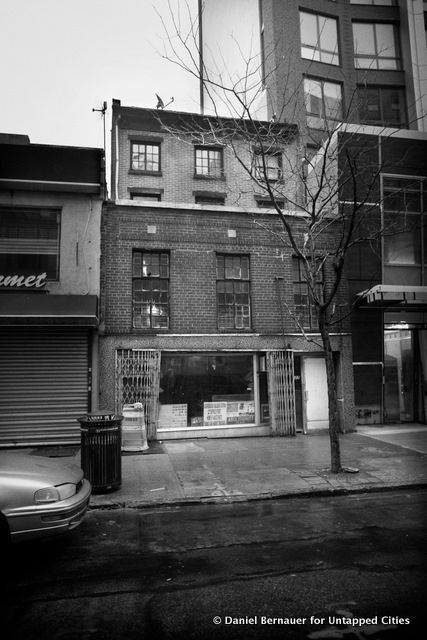
227 Duffield Street
The houses at 227, 233 Duffield Street and 436 Gold Street reportedly were stops on the Underground Railroad, and residents claim there is a tunnel connecting the basements of the houses on Duffield Street, documented in the lawsuit FUREE v. Bloomberg. The downtown Brooklyn / Brooklyn Heights area was a major focal point of the abolitionist movement–Plymouth Church is just a short walk from Duffield Street. In 227 Duffield lived Thomas and Harriet Truesdell, both staunch abolitionists. Thomas Truesdell attended the 1836 Rhode Island Anti-Slavery Convention. Harriet Truesdell was an active member of the Providence Female Anti-Slavery Society and a planning committee member of the Anti-Slavery Convention of American Women in 1838.
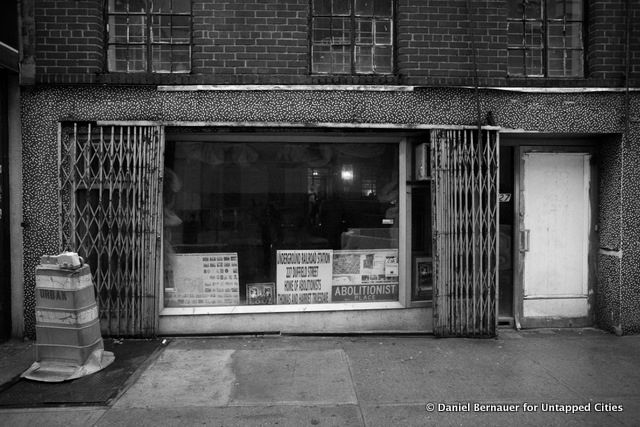
These properties were the center of controversy between residents and the developers who want to demolish the buildings using the powers of eminent domain to make way for the Atlantic Yards (now the Pacific Park) development project. Non-profit organization FUREE (Families United for Racial and Economic Equality) entered into a lawsuit with resident Joy Chatel against Mayor Bloomberg, members of his staff, the Economic Development Corporation, the City of New York, the Department of Housing and Preservation and the City Council of New York City. In the brief, the plaintiffs contest the NYC Economic Development Corporation-commissioned report for lack of thoroughness and incomplete research methodology, including failure to hire an archaeologist to examine the basements.
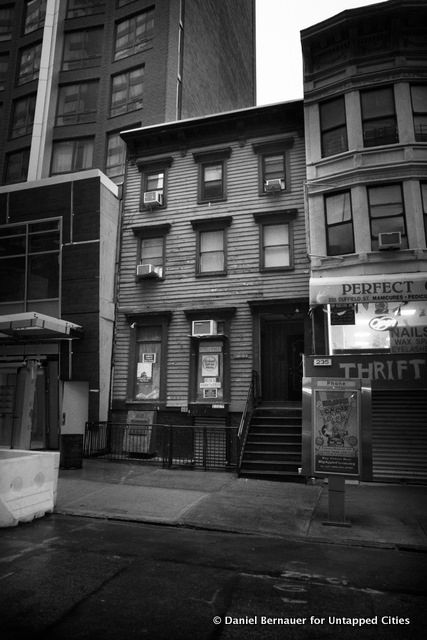
233 Duffield Street

While 227 Duffield Street is now being turned into a museum, other buildings on the street have been demolished. Plans for development of Albee Square, called City Point, are still in development.
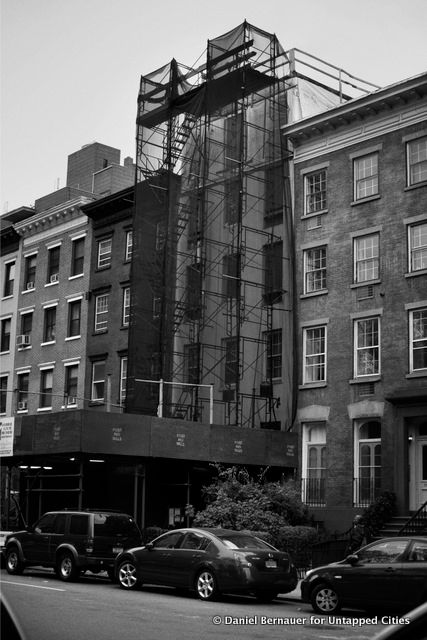
This Greek Revivial Townhouse is Manhattan’s last known Underground Railroad junction. In 2011, it also become contentious when the building owner began to add an additional fifth floor. The Gibbons family were abolitionists even before the Civil War and opened their home to others sympathetic to the cause. It is reported that William Lloyd Garrison dined there with an escaping slave. During the Draft Riots of 1863, the house was attacked and burned. Two of the Gibbons daughters managed to escape through the roof onto adjacent properties and finally into a carriage on 9th Avenue.
On the day of our visit, work appeared at a standstill and the scaffolding permit had expired in December 2010.
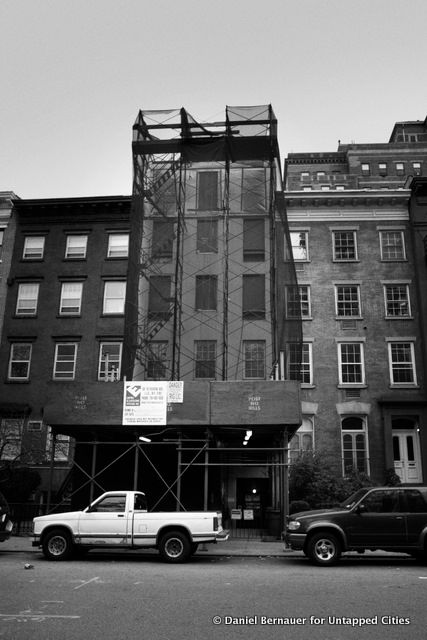
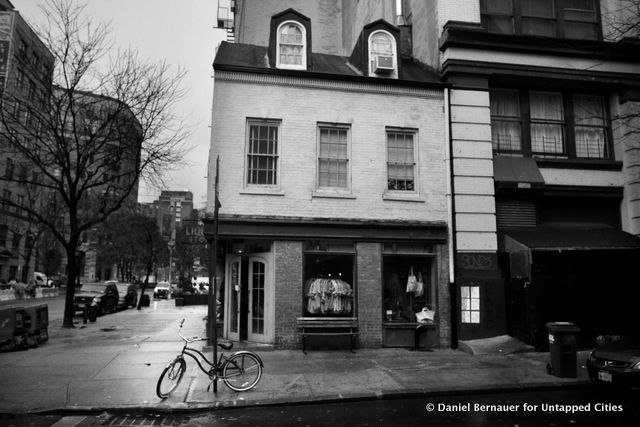
Theodore Wright was born free in 1797 and educated in the African Free School. Wright was the first black graduate of the Princeton Theological Seminary and a staunch abolitionist in a time of turbulent riots and strong anti-African American sentiments. He advocated for the abolishment of slavery and an end to racism. He stated that true courage was not “to ask about the vileness of slavery, but to treat the man of color in all circumstances as a man and brother.” Wright’s home on White Street, built in 1809 as an 18th-century Dutch style house, served as a stop on the Underground Railroad. Wright’s home still exists, and is now a designated New York City Landmark. The J.Crew Men’s Shop occupies the first floor.
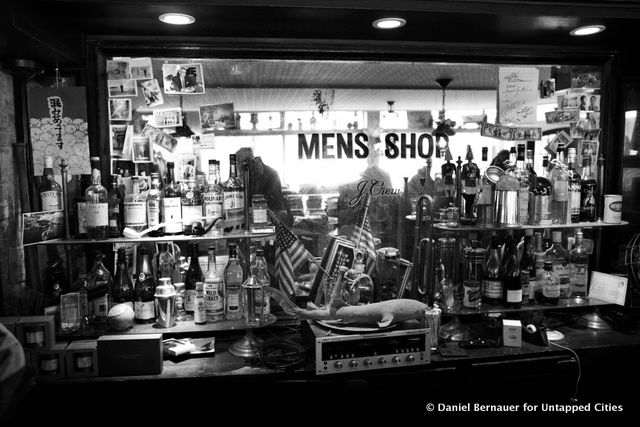
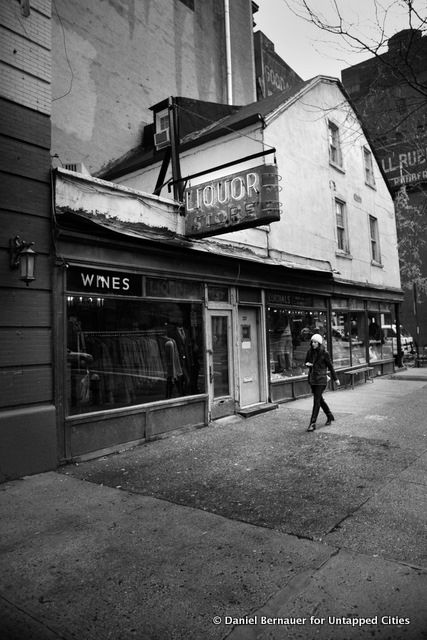
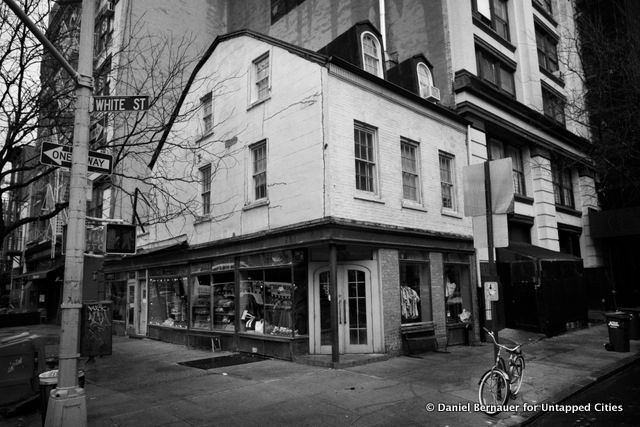
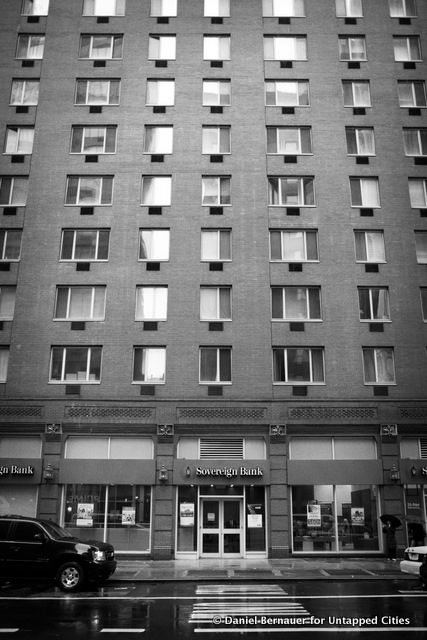
This church, now known as the Broadway United Church of Christ, was erected in 1836 and has been a central gathering point for many social movements, including abolition, women’s suffrage, temperance and even civil rights–albeit in different locations (this church location was demolished in 1856). Frederick Douglass spoke at the church, as did William Lloyd Garrison and Sojourner Truth. The church raised funds to purchase slaves’ freedom and published The Independent, an anti-slavery newspaper. It’s currently located at Broadway and 93rd street, and remains a progressive advocate of human rights–their current pastor is openly gay. Sovereign Bank is the current occupant of Tabernacle’s original Broadway location.
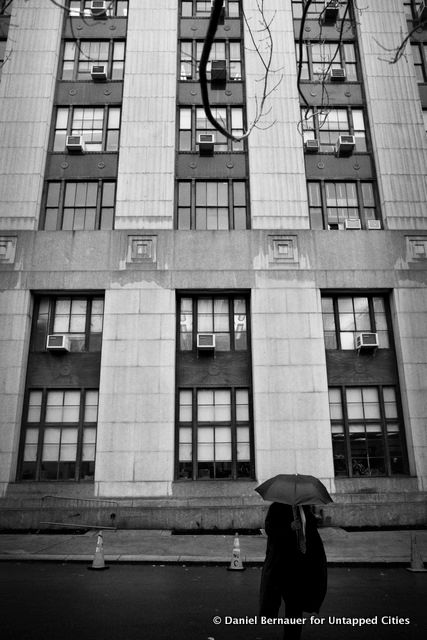
The African Society for Mutual Relief functioned as an all-encompassing safety net, offering health insurance, a form of life insurance, and assistance in paying for burial costs–in return for dues. It functioned as a school, a meetinghouse and a stop on the Underground Railroad. Formed in 1808, the organization moved to 42 Baxter Street in 1820, thanks to the generosity of former Haitian slave Juliet Toussaint. A New York state government building currently occupies the original location of the Society.
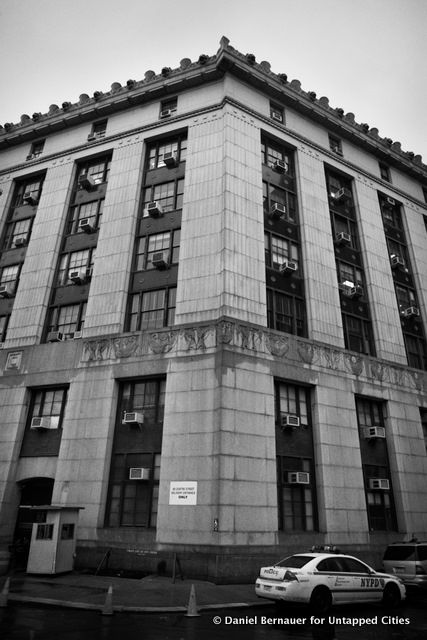
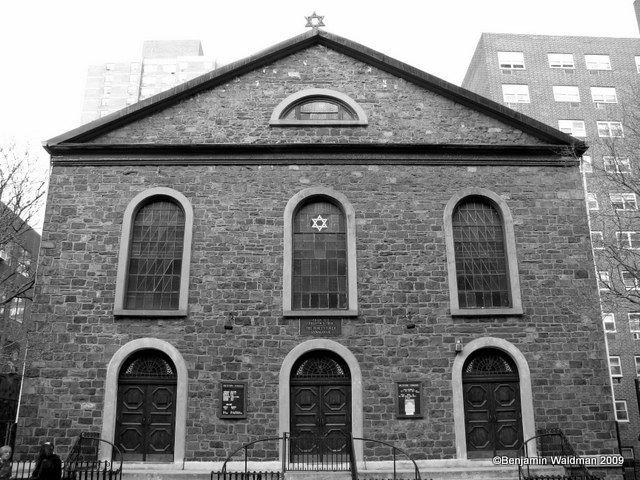
The Bialystoker Synagogue’s connection to the Underground Railroad might just be part of urban lore, but in the corner of the women’s gallery there is an opening with a ladder that takes you up to the attic where fugitives were reportedly housed.
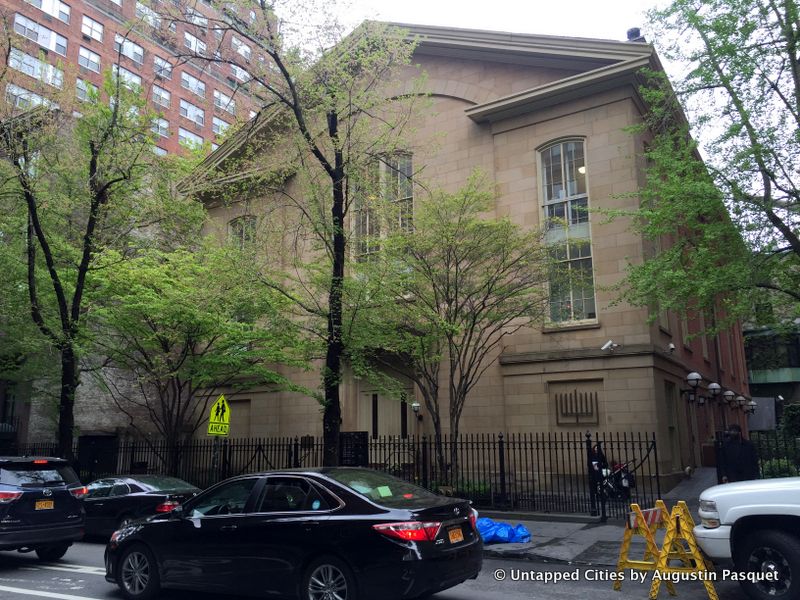
The Brotherhood Synagogue, Beit Achim, on Gramercy Park was founded in 1954. The landmarked building, built in 1859, was formerly a Friends (Quaker) Meeting House is said to have once housed runaway slaves on the Underground Railroad, with a possible tunnel
Next, read about the Top 10 Secrets of NYC’s Former Slave Market.
Resources
Online exhibitions of the American Free School and slavery in New York. [New York Historical Society]
Information on the Plymouth Church of the Pilgrims (and their organs.) [New York City American Guild of Organs]
Video tours of Underground Railroad sites in downtown Manhattan. [New York Historical Society]
Images of the Broadway Tabernacle Church. [Mitra Images]
Thorough visual and textual information on numerous sites relevant to African American history in New York. [MAAP: Columbia University]
Information on the Duffield Street happenings. [Duffield St. Underground]
Get in touch with the author @zamirmon.
Subscribe to our newsletter